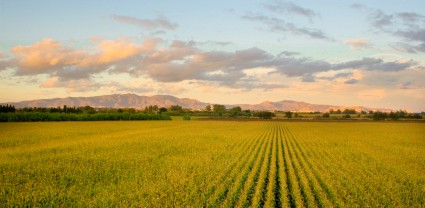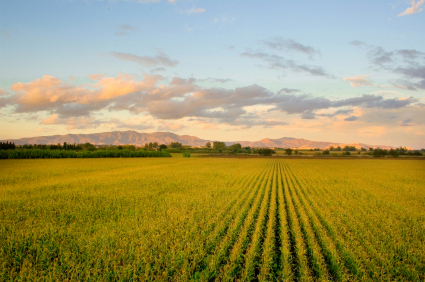By Elizabeth Williams
DTN Special Correspondent
WEST DES MOINES, Iowa (DTN) — Wall Street’s romance with farmland hasn’t waned despite commodity price setbacks. In fact, professional investors attending the recent Iowa Land Expo see the steep drop in crop prices since 2013 as a buying opportunity for farm real estate.
Three publicly traded agricultural real estate investment trusts (REITs) now join other institutional investors combing the country for farmland deals. Although total investor ownership of farmland is just a small slice of farm sales, interest is increasing as farmland values slide lower.
“We’re finding good return deals in this market. You just have to be selective,” said Paul Pittman, CEO of Farmland Partners, Inc., the Denver-based ag REIT that made headlines in 2015 with the record purchase of 22,300 acres in Illinois.
Farmland Partners Inc., listed on the New York Stock Exchange ((NYSE: FPI) is the largest publicly traded agricultural REIT. It now owns 258 farms for a total of 107,900 acres in 13 states. Another REIT, Gladstone Land Corp. (Nasdaq: LAND) based in McLean, Virginia, owns 43 farms totaling 16,810 acres in six states. The newest publicly traded company devoted to farmland ownership is American Farmland Company (AMEX: AFCO), whose agricultural headquarters is in Salt Lake City. It went public in October 2015 and owns 18 farms in six states (California, Illinois, Arkansas, Alabama, Georgia and Florida) with about 16,000 acres.
While farm operators are somewhat wary about investors competing to buy farmland, “we don’t set high prices,” said Pittman. “A well-financed farmer will out-bid an investor looking for a higher return. In fact, we support the market at the lower end [when few want to bid on a farm].”
LOOKING FOR HIGHER RETURNS
Wealthy individuals also remain on the hunt for farmland, said Steve Bruere, CEO of People’s Company, a real estate/farm management company based in West Des Moines. “We get calls all the time: ‘I’ve got $10 million and want a 5% annual return, do you have any farmland property I could buy’.”
Bruere tempers their expectations, given lower commodity prices and rents. “You’re not going to find that kind of return in row-crop farmland,” he said. “Today, we’re looking at a 3% to 3 1/2% cap rate (cash rent divided by land value).”
For example, $250 per acre cash rent divided by $8,000 per acre land yields a 3.125% return (cap rate). “In this land market, you might be able to get a 4% gross return, before property taxes. For good quality land a year or two ago, you might have been able to get $350 per acre, but now you’re looking at cash rent levels more around $250 per acre,” Bruere added.
Pittman believes deals can still be had. “It depends on the area, as to what return we’re looking for,” he said “In the Southeast U.S., we want a 5%-5.5% return rate. In the Delta: 4.5%-5%. In the High Plains: 4.5%-5%. In eastern Nebraska: 4%-4.5%. In Illinois or Iowa 3.5%-4%.” The higher the risk, the higher return.
For specialty crops, such as vegetables or permanent crops (orchards or vines), Pittman looks for a 7%-8% return on investment, but he is not a big fan of permanent crops.
“I don’t want more than 15% of my portfolio in specialty crops because two-thirds of the value of the purchase is wrapped up in a tree or vine that won’t last forever. For example, a disease or storm could wipe-out an orchard, or consumer demand could shift (such as in oranges), or over-supply could collapse prices (as with almonds) and you’re stuck with a permanent crop,” he said.
JOIN THE CLUB
Investor buyers are not new to ag land. Pension companies such as Prudential and Metropolitan Life have had farmland in their investment portfolios since the Depression. TIAA-CREF (Teachers Insurance and Annuity Association of America), a relatively newcomer to farmland ownership, owned 227,380 agricultural acres in 12 states at the end of 2014. That didn’t count an even larger overseas portfolio.
Still the negative impression of outside investors in agriculture persists. “Nobody likes an investor, unless it’s their own investor,” noted Bruere. “To run a commercial farming operation of 5,000 acres, the capital investment just to operate is huge. It’s hard to own all the ground you operate. Renting is a necessary part of doing business.”
“Investor funds don’t prevent farmers from owning farmland,” Pittman noted. “The farm operator should own what he can afford and rent the rest. Our company is the simplest way to bring equity to American agriculture.
The advantage of an ag REIT is that it allows small investors to participate in the market and diversify their geographic risk. That’s important when prime Midwest farmland still commands $10,000 an acre in some locales. “A teacher or firefighter or business person can buy our stock and own agricultural land,” said Pittman. “And we only charge around a 1% management fee that includes the farm management.”
Another advantage of owning farmland through a REIT, said Pittman, is if you want to sell, you simply sell your stock without having to sell the farmland.
NO BIG DEAL, YET
“Although we’re seeing more interest from investment funds in farmland, they are still a small part of the market,” said R.D. Schrader, owner of Schrader Real Estate and Auction Company, based in Columbia City, Indiana, which conducts more than 200 agricultural auctions per year in more than 40 states. “As land values were climbing, 70% to 80% of the buyers were farm operators. As the farmland market has softened in the past two years, investor buying has picked up maybe another 10%.
“There is still a lot of cash out there looking to invest in farmland from both farm operators and outside investors, Schrader reported. “Since farm profits aren’t there right now, there is still pressure on land prices, but they haven’t fallen as far as some expect.”
Elizabeth Williams can be reached at elizabeth.williams@dtn.com


